A landmark moment in both the history of motorsport and the genesis of the flying car mobility revolution has been made in the salt flats of South Australia. Airspeeder pilot Zephatiali Walsh beat fellow competitor Fabio Tischler in a tense and close inaugural EXA remotely piloted race.
This was the first time Zephatiali Walsh and Fabio Tischler were given full license to race their 4.1m long eVTOL race-craft blade-to-blade in a fully competitive race setting. No concession to preserving their vehicles was made as the competitive instincts of born racers were on display from the very beginning of this historic first race, staged above the pink salt flats of Lake Lochiel near Adelaide, South Australia.
Every second of the 270+ test flights and thousands of hours of simulator preparation informed both competitors’ approach to securing their place in the history of motorsport and flying cars as the next great coming leap in human transportation.
This skill and commitment of Zephatiali Walsh and Fabio Tischler were on show from the very beginning, with three overtakes in the first lap alone. The most daring manoeuvre of all was rewarded with the ultimate victory when Zephatiali Walsh daringly overtook Tischler who had gone wide at Turn 1.
On losing speed on exit, Zephatiali Walsh made his move flying just 1 meter below his fellow competitor to secure the track position that ultimately led to this historic maiden victory. This move illustrated the scope for drama when racing craft at close quarters with F1 car turning ability and the third dimension of vertical manoeuvrability.
As pilots, we’ve been developing this sport behind the scenes over hundreds of hours of simulator, engineering and testing work and through this process, we have been united as a group of pilots in one common goal – to deliver this historic first race. As soon as the lights turned green, we became racers competing for a place in the history of this sport and flying cars as the coming transportation revolution. I couldn’t be prouder to know that forever more I’ll be the first winner of an electric flying car race and I look forward to retaining my crown as we go racing around the world in the coming months.
Zephatiali Walsh, Airspeeder Pilot and winner of the world’s first electric flying car race
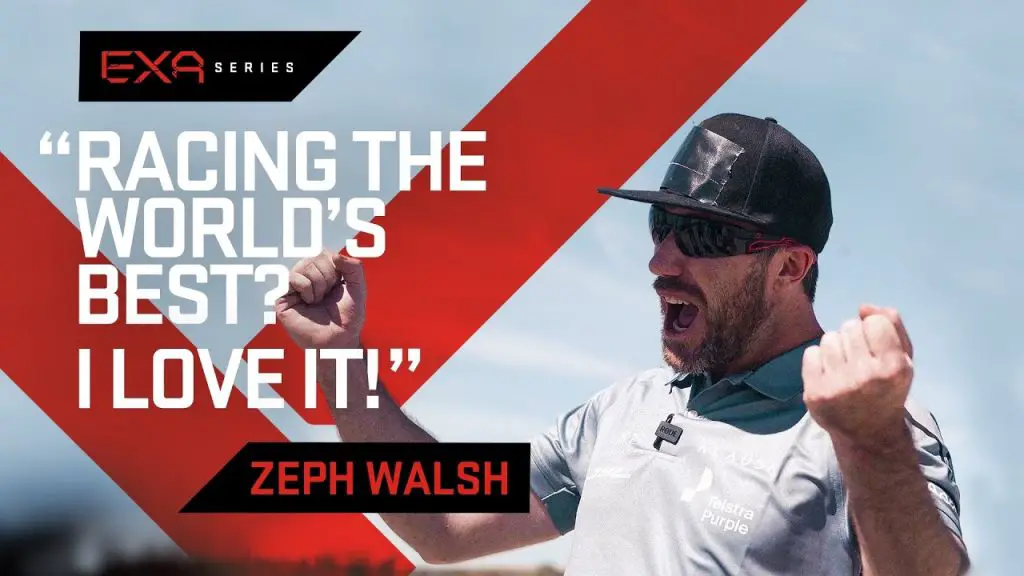
The circuit race took place over a 1km digital sky-track, with the competition played out in two sessions punctuated by the rapid battery-swap pitstops that will add a compelling strategic layer to every EXA remotely piloted and ultimately Airspeeder crewed Grand Prix.
This is the first of a series of EXA remotely piloted races that will serve as the development and feeder series for the Airspeeder fully crewed Grand Prixs starting in 2024. The race was commentated on by Bruno Senna, Airspeeder development pilot and ambassador and Nikki Shields, acclaimed motorsports broadcaster.
The highlights package of Zephatiali Walsh vs Fabio Tischler offers a glimpse of the streams that will allow a generation native to live stream to watch and interact with the sports on-demand and from any device.
Zephatiali Walsh vs Fabio Tischler: Race Highlights
This historic first race between Zephatiali Walsh and Fabio Tischler is just a taste of what is to come from a sport more than 4 years in the making. EXA Remotely piloted races will soon feature a much wider grid of pilots including Bruno Senna, former F1 and World Endurance Racing star.
These races will be staged in places where racing has never been seen before. Digital sky tracks and a light approach to infrastructure mean racing can take place in a range of locations and landscapes from marine to forest and desert settings.
A proven ecosystem for racing
Beyond making motorsport history with Zephatiali Walsh and Fabio Tischler racing, Alauda Aeronautics, the technical team and manufacturer of the pioneering Speeders that compete in EXA and Airspeeder races has created an engineering and digital ecosystem for electric flying car (eVTOL) racing.
This is an extraordinary technical accomplishment delivered by a team drawn from some of the most celebrated names in Formula 1, motorsport and advanced aerospace development. This includes multi-World Championship-winning engineers from Ferrari and development talent from Boeing, Airbus, McLaren, Jaguar Land Rover and Rolls-Royce.
To support this historic first race, they had to build Race control stations, pilot control stations, cutting-edge 5G networks, Augmented Reality (AR) Sky Tracks, and an engineering and team control station, akin to that seen in elite traditional motor racing. In addition, they had to develop race rules and a full suite of safety, logistics and race management protocols. In turn, the technology used in racing is a snapshot of what our cities will be using in the next decade to underpin the emergence of electric flying cars (eVTOL) as a viable means of passenger transport.
This technical ecosystem starts with the 4.1-meter flying racing car (eVTOL), a carbon fibre construction full-scale racing quadcopter. At its heart it is a performance machine, maximum power it delivers 320kW, equalling an Audi SQ7 performance SUV. The Audi weighs 2,500kg while an Airspeeder racing craft (without a pilot) weighs just 130kg. It can lift a weight of more than 80kg, proving the viability of the powertrain for piloted races. Acceleration from 0-62mph takes 2.8 seconds and the Speeder can climb to 500 meters.
The technical package proven in these inaugural EXA races will underpin future crewed Airspeeder races. Indeed, the key safety and digital systems will not only drive the world’s most exciting new form of motorsport but will also serve as a place and a space for the eVTOL industry to develop vehicles with real-world passenger and logistics applications.
For example, Alauda has collaborated with technical partners, Telstra Purple, Acronis and Amazon Web Services throughout the development of these races to create the digital architecture that will drive the 5G-enabled infrastructure needed to ensure the safe management of autonomous and piloted eVTOL vehicles in urban environments.
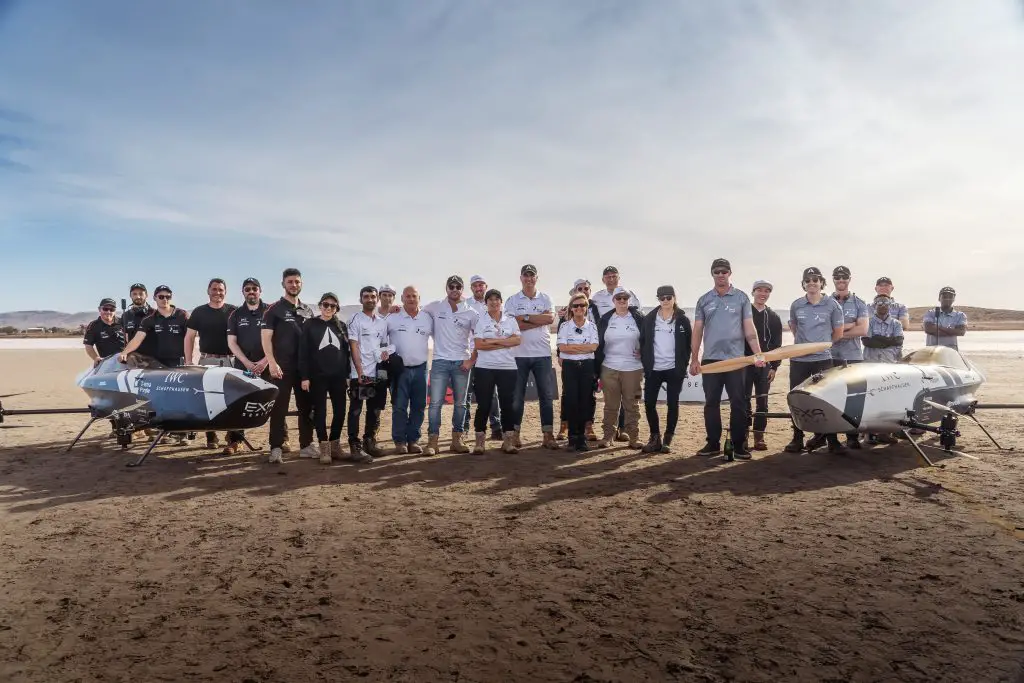
This collaborative approach to the development of not only a sport but the wider ecosystem will underpin the eVTOL mobility revolution extended to every one of Airspeeder and Alauda’s commercial and technical partners.
This started with a knowledge exchange between Alauda’s expert team of engineers and the designers and specialists at the company’s Engineering and Timekeeping partner, IWC Schaffhausen. This ongoing dialogue serves as a vital lighthouse in producing the highest quality racing machines with sustainability at the art of their purpose and function.
The Alauda and Airspeeder teams were also able to draw upon expertise from Acronis and Teknov8 in securing and managing vital telemetry and race data. The staging of the race was supported by the Government of South Australia which has nurtured an ecosystem of the world’s leading space and advanced aerospace companies. This extends to co-funding Alauda Aeronautics hyper-factory, a place where the world’s best-performance flying cars will be built alongside spacecraft, satellites and aircraft.
Just the start
This historic first remotely piloted race will be followed by Grand Prixs with wider grids flown over a multitude of locations and track layouts. These EXA races will serve as the feeder series for Airspeeder crewed races set to take place in 2023.
Find more motorsports news by clicking HERE.


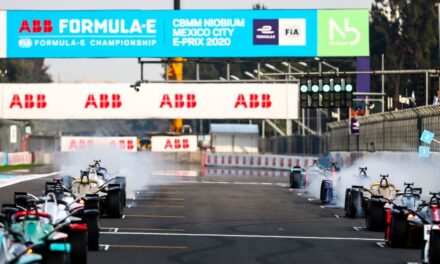

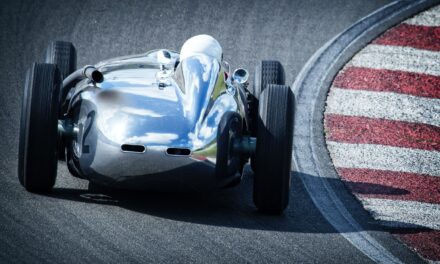
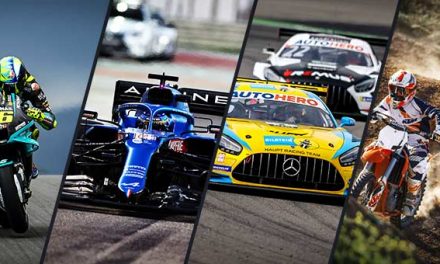
Trackbacks/Pingbacks